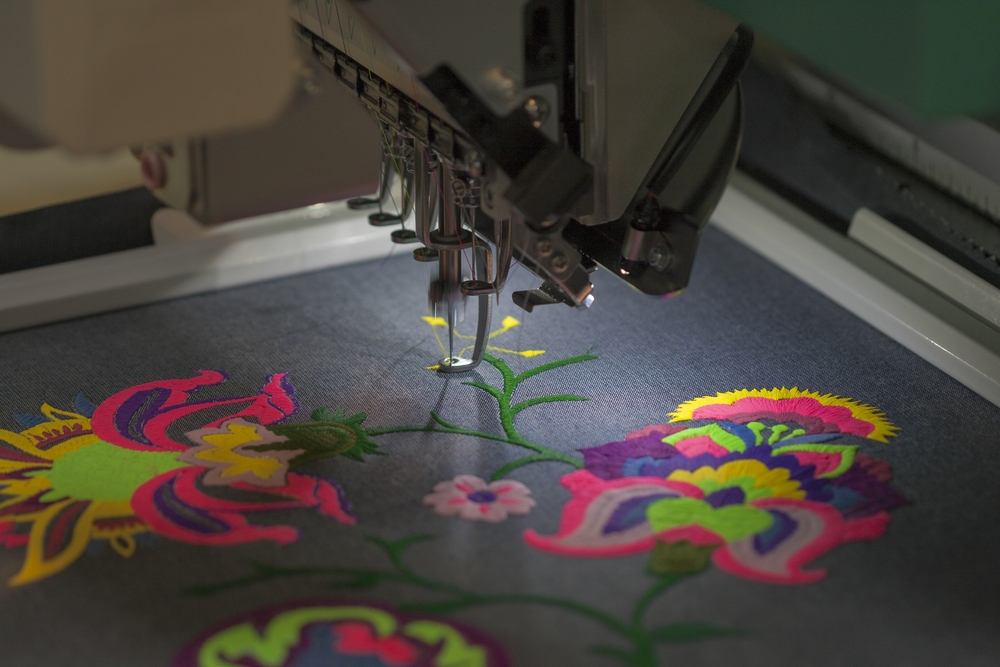Dependable Digitizing for Embroidery: Relied On by Professionals
Mastering the Embroidery Digitizing Refine: Your Ultimate Guide
Needlework digitizing is a precise craft that needs precision and expertise to equate intricate styles into digital formats for device needlework. As craftsmens get started on this trip to understand the embroidery digitizing procedure, a comprehensive understanding of the essentials sets the structure for excellence.

Comprehending Embroidery Digitizing Essentials
Needlework digitizing essentials develop the structure whereupon intricate styles are equated right into machine-readable formats for specific sewing. This preliminary action in the embroidery digitizing process is important for making sure that the last embroidered item is a faithful depiction of the initial style. Recognizing needlework digitizing essentials includes realizing vital concepts such as stitch kinds, stitch instructions, thickness, underlay, and pull payment.
Sew kinds play an important function in determining the aesthetic and textural outcome of the stitched style. By picking the appropriate stitch kind, whether it be satin, fill, or running stitch, digitizers can attain the desired effect and enhance the overall quality of the embroidery. Additionally, sew direction influences the flow and measurement of the layout, while density identifies the spacing and protection of the stitches.
In addition, padding sewing gives security to the style by safeguarding the fabric and protecting against distortion during the embroidery process. Draw settlement is another essential factor to consider to combat the natural propensity of material to contract when sewn. Understanding these embroidery digitizing fundamentals is fundamental for developing professional-quality stitched items.
Selecting the Right Digitizing Software
Picking the appropriate digitizing software program is a vital choice that dramatically affects the performance and top quality of the embroidery digitizing procedure. Digitizing for Embroidery. When selecting the right digitizing software, it is vital to consider elements such as the intricacy of designs you plan to create, the user-friendliness of the software, the degree of consumer assistance used, and the compatibility with your needlework device
There are various digitizing software alternatives offered out there, ranging from fundamental programs for novices to sophisticated software program for professional digitizers. Some popular options include Wilcom EmbroideryStudio, Hatch Embroidery Software Program, and PulseID. These software use a wide variety of tools and attributes to assist you create intricate layouts effortlessly.
Prior to deciding, it is advisable to discover the different software alternatives with totally free tests or demos to establish which one best matches your demands. Furthermore, reading evaluations and looking for referrals from experienced digitizers can supply valuable understandings right into the toughness and weak points of each software (Digitizing for my site Embroidery). By carefully evaluating your requirements and comparing the features of different digitizing software application, you can make an enlightened selection that enhances your embroidery digitizing process
Digitizing Devices and Methods

Optimizing Layout Setup for Needlework
Grasping the ins and outs of go layout setups is fundamental in accomplishing optimal lead to the embroidery digitizing procedure, structure upon the structure laid by recognizing digitizing tools and techniques. When enhancing design setups for embroidery, it is vital to take into consideration variables such as stitch type, thickness, rug, draw settlement, and enrollment. Stitch type choice influences the overall feel and look of the layout, with choices like satin, fill, and running stitches offering different textures and impacts. Thickness refers to the spacing and density of stitches, influencing the style's insurance coverage and sturdiness. Proper underlay sewing gives stability and avoids material distortion, specifically for complex styles or on elastic products. Draw settlement adjusts for material stretch throughout sewing, guaranteeing precise layout duplication. Enrollment setups align various elements of the design precisely, maintaining total layout honesty. By fine-tuning these layout setups, embroiderers can boost the top quality and accuracy of their stitched creations.

Troubleshooting Common Digitizing Issues
When running into usual digitizing issues during the needlework procedure, it is essential to comprehend the origin and execute efficient solutions promptly. One usual issue is stitch density issues, where stitches might be as well thick, causing the textile to pucker, or also thin, bring about spaces in the design. Readjusting the stitch thickness setups in the digitizing software can help settle this problem.
Another regular challenge is thread breaks during the needlework process. This can happen as a result of different factors such as incorrect stress settings, boring look at this now needles, or making use of low-quality thread. Making certain appropriate maintenance of the needlework device, consisting of normal needle modifications and tension changes, can reduce the incident of string breaks.
In addition, layout enrollment mistakes can lead to misaligned components within the needlework layout. Checking the style placement in the digitizing software program and making necessary adjustments prior to stitching can help in avoiding this concern. By addressing these usual digitizing problems without delay and properly, you can make certain a smoother needlework process and top quality finished products.
Conclusion
In final thought, grasping the embroidery digitizing procedure needs a strong understanding of the fundamentals, the right selection of software program, and expertise of tools and strategies. Maximizing layout settings and fixing usual digitizing issues are critical steps in making sure premium needlework outcomes. By adhering to these steps vigilantly, one can accomplish accuracy and performance in the digitizing process.